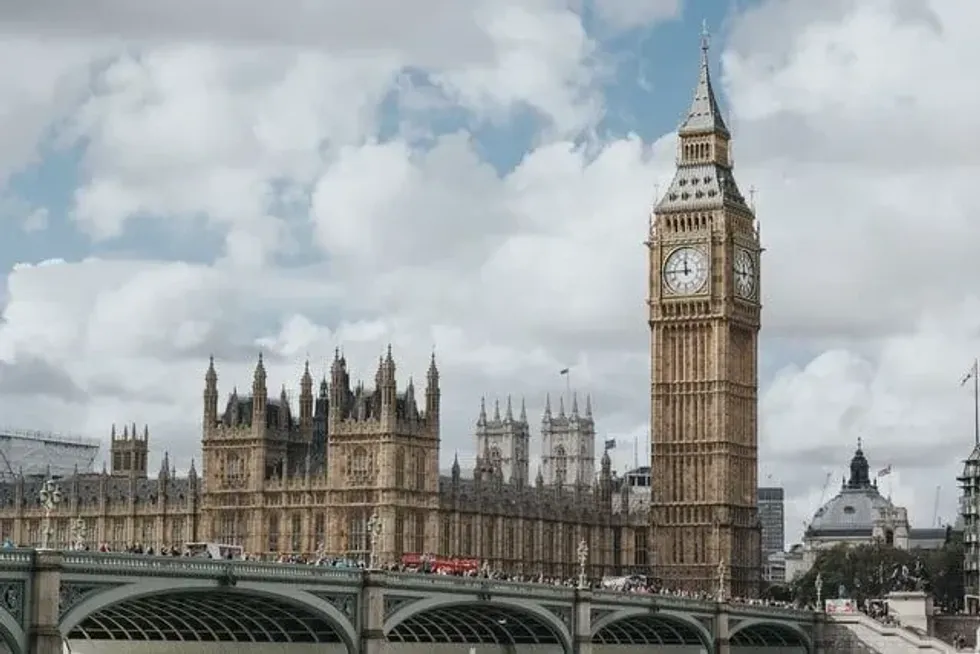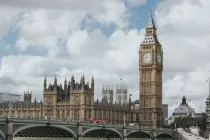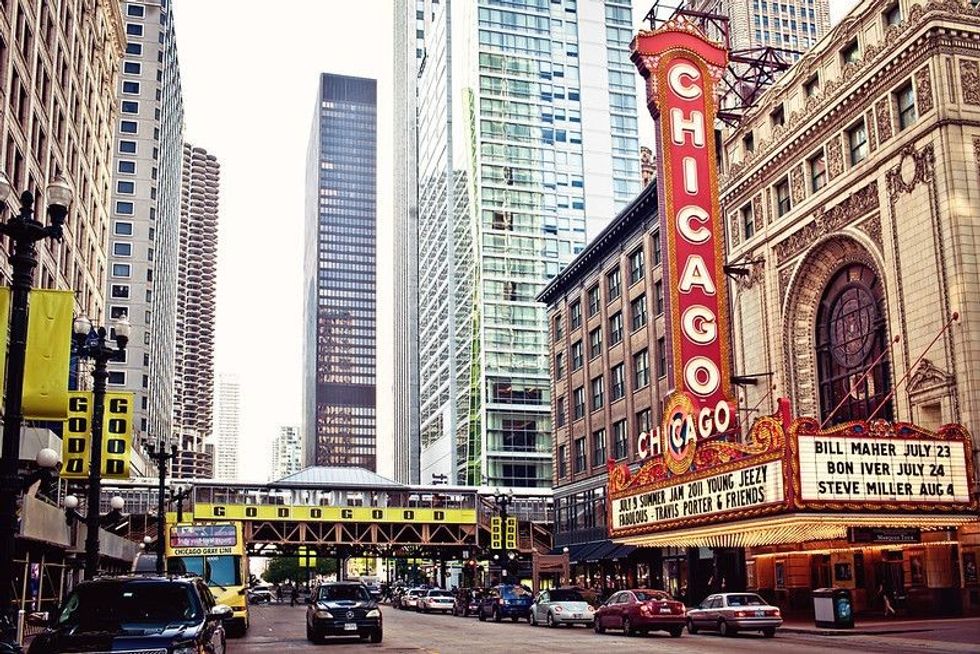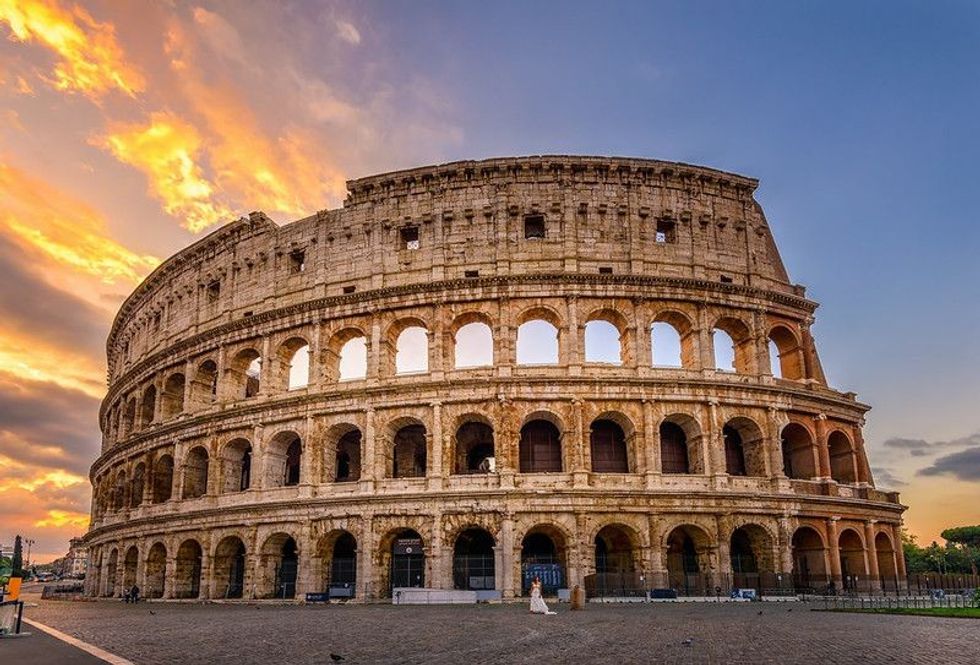67 Facts About London Which Will Make You Fall In Love With The City

London, the capital city of the United Kingdom, is among the oldest great cities in the world.
The history of the city spans almost two millennia. The city was founded and devised by the Romans.
Before it was conquered and named Londinium in 43 AD, the city was just a small village. The Romans saw the potential of the city and decided to form a large city that had unique trading centers and fortified walls.
Today, London is one of the most famous cities in the world and is the home to globally renowned landmarks such as the London Bridge and Big Ben. The city is one of the major trade centers alongside Tokyo, New York City, and Hong Kong.
Compared to other cities of Britain, London's closure of factories was well-compensated thanks to the city's zestfulness in the media and financial services.
History Of London
Since its foundation, London has experienced a rich history, with the British Empire playing a major role. The city is home to many ancient architectures, such as the Tower of London. Learn more about the city's history with these facts:
The Romans established London, and their reign in the region continued from 43 AD to the fifth century AD, when the Empire fell.
The city was named Londinium by the Romans in the third century. The region had a small population of 50,000 who settled in it for its major ports.
Londinium fell because of Anglo-Saxon conquests in the fifth century, and in the eighth century, it was announced as the capital of the Kingdom of Essex.
Locally known as the Square Mile, the area covers only 1.12 sq mi (2.9 sq km), and it was London as it was inhabited by the Romans in the first century BC.
This settlement continued until the Middle Ages. The city is a small part of the metropolis and forms the smallest province in England.
The town was plundered many times in Viking attacks, and some even settled in the area and established business and trade in the town, and in turn, established London as a major city.
The Norman invasion in 1067 saw England being conquered by William the Conqueror, and he anointed himself as the King of England. He created the existing laws, privileges, and rights in the city, and the Tower of London, too, was built under William's rule.
England, for many years, had no capital city. However, the establishments of the central government were relocated to Westminster, which was close to London.
This relocation and the rise of commerce in the city were two of the most important factors that led to the selection of London as the capital of England.
London was the world's largest city for almost a decade! It surpassed the 1.1 million population of Beijing in the mid-1800s with its 7.4 million people by 1914. New York City took the lead after 1914, and now London ranks 33rd in the largest population charts.
The Great Fire of 1666 destroyed London, with large parts of the city in ruins. However, the verified death toll is only six people. But this number is only believed to have grown as many died from the indirect casualties from fire.
Monument to the Great Fire of London was created to commemorate the lost lives. The structure is 203 ft (61.8 m) tall and is situated 203 ft (61.8 m) from where the great fire began.
The Great Plague caused around 25 million fatalities in the world, a third of which was the entire population of Europe in the 15th century.
London was one of the worst affected regions because of the lack of sanitation and narrow streets. The dead bodies were thrown in mass burial pits, some of which are still being discovered in the city.
Geography And Cityscape
London is located in southeastern England, straddling the river Thames around 49.7 mi (80 km) upstream from its branches in the North Sea. The growth of the city was stopped in the mid-'50s by town planning controls. These geography and cityscape facts will help you learn more:
London can be categorized as a forest because of its large concentration of green areas! There are over 8.4 million trees spread all across the city.
There are around 120 fish species in the Thames, 60 bird species in Central London, and around 1,173 moth species, 270 spider species, and 47 butterfly species in the city!
However, Greater London is a whole other matter, with a larger area and a bigger population.
The shard is London's tallest building. The structure stands at a height of 1015.7 ft (309.6 m) and is also the sixth-tallest building in all of Europe.
Many people believe that the bridge they see, with the two towers, is called the Tower Bridge, and not London Bridge.
There are rumors of the Tower Bridge being haunted! For many years, people have claimed sightings of a woman in black roaming the bridge and a British police officer patrolling the area.
The Millenium Dome is one of the many gigantic structures in London! The amazing piece of architecture has a diameter of 1197.5 ft (365 m) and is 170 ft (52 m) high in the middle, with 12 supporting poles, signifying the days, weeks, and months of the year.
The London Eye was not the earliest big wheel situated in London! The biggest wheel ever was The Great Wheel and was constructed as a part of the Empire of India Exhibition in 1895.
It was, however, demolished in 1907, 91 years before the beginning of the creation of the London Eye.
Each of the 32 capsules in the London Eye is a representation of the London boroughs. However, they are counted up to 33, as they skipped the number '13'.
The London Underground is known as the oldest underground railway network in the world.
A line between Farringdon and Paddington was opened in January 1863, and wooden carriages were powered by gas and pulled by steam engines.
London plays host to the oldest underground railway network in the world - the London Underground.
Aldgate Underground Station is built on what was a mass grave for the people who lost their lives to the plague. There are more than 1,000 corpses that lay underneath the station.
London is home to more than 10,000 foxes! The city is known as fox heaven because of the large population found in the city.
The Tower of London was an infamous prison from the 16th to the 20th century. The tower was used as a torturing chamber under the reign of Henry VIII.
Rudolf Hess, the deputy Führer to Adolf Hitler, is one of the most famous inmates who was imprisoned at the end of the Second World War.
The last released prisoners were The Kray Twins, who were released in 1952.
There are around 20 rivers and canals that are buried beneath the streets of London! These buried rivers and canals are believed to be from a century ago and were covered to build the many buildings and streets in the city.
The Palace of Westminster, once used as a royal palace, is now also known as the House of Parliament, and it is the largest in the United Kingdom. The palace features a hair salon, a shooting range, six restaurants, eight bars, 11 courtyards, 100 staircases, and 1,000 rooms.
Culture Of London
Culturally, London is a diverse city with people of all races and religions co-existing. Learn more about London's culture with these facts:
London is considered one of the most diverse cities in the world! The city houses more than 8.9 million people, and the London residents collectively speak more than 300 languages such as Punjabi, Mandarin, Cantonese, Gujarati, Hindi, Hokkien, and of course, English.
London's urban population aggregate is believed to be close to the 15 million mark, which makes London the largest city in the United Kingdom and the second-largest city in Europe after Moscow, Russia.
The population of the various countries ruled by the British Empire immigrated to London in the '40s, and a large population of Pakistanis, Indians, Trinidadians, and Jamaicans can be seen in the city as a result of this immigration.
The current Mayor of London, Sadiq Khan, is the first Muslim Mayor of any European Union capital city.
Khan also holds the record for the most significant victory over the opposition by several votes in British history.
The city is home to more than 170 museums, from the gigantic British Museum to Greenwich's diminutive Fan Museum.
The city experienced a Gin Craze that stretched from 1720 to 1751, and it saw the average gin consumption rise to 20 oz (0.5 l) each week.

Sports And Entertainment
Both sports and entertainment are a major part of the daily lives of the London population. The city houses several stadiums and theaters that keep the population busy! Learn more with these facts:
Many of the cultural fortresses in London are free! Entrance to tourists spots like The Science Museum, Tate Britain, British Museum, National Gallery, National History Museum, Imperial War Museum, Tate Modern, and many more are free of cost!
London is known for its pub culture, and the city is home to hundreds of pubs, some of which are even older than the United States itself!
The Hoop & Grapes pub located in Aldgate is known to date back to the 1600s!
London has not one but six orchestras! The London Symphony Orchestra, The London Philharmonic, The BBC Symphony Orchestra, The Royal Philharmonic, the Philharmonia, and Orchestra of the Royal Opera House are the names of the aforementioned orchestras.
There are more than 20,000 musical events held in London yearly! London's o2 arena is known as the most popular music venue in the world.
London holds two records that are associated with the Olympics. The first record is its status as the only city in the world to host the Olympics thrice - 1908, 1948, and 2012.
The second record held by the city is about it hosting the longest Olympics ever! The 1908 Olympics lasted 187 days!
London is home to some of the best football teams in the world! Clubs like Chelsea, West Ham, and Arsenal are globally renowned, with other clubs like Crystal Palace and Tottenham Hotspur also getting global recognition in recent years.
The oldest bicycle shop is believed to be situated in London. A blacksmith founded the Pearsons of Sutton in 1860. London's Herne Hill, created in 1891, is the second oldest cycle track in the world.
Today, there are only two games that are played only in London and nowhere else.
The first is a format of Old English skittles, once popular in the South East but now limited to only one alley in Hampstead. The second in rugby netball, which was created by soldiers in 1907 and is played only in the summer.
Wimbledon, also known as The Championships, is one of the oldest and most prestigious tennis tournaments in the world. The event began in 1877 and is still played today at the All England Club in Wimbledon.
Did You Know?
Learn more about London with these random facts:
London has numerous famous people who lived in the city. World-renowned people like Charles Darwin, Charles Dickens, Karl Marx, Slyvia Plath, Jimi Hendrix, Florance Nightiangle, Wolfgang Amadeus Mozart, and hundreds more have called this city home. The locations are marked with blue plaques.
Big Ben is a world-renowned piece of architecture and is London's most prominent landmark. In reality, the name of the tower was supposed to be 'The Clock Tower,' and 'Big Ben' was used as the name of the bell in the tower.
The structure, however, became famous as Big Ben instead of being known by its real name, the Elizabeth Tower.
The Queen resides in Buckingham Palace occasionally! When the Queen is at Buckingham Palace, her royal flag can be seen flying from the palace's flagpole.
The flag, also known as the Royal Standard, is only flown from buildings in the Queen's presence.
The identity of Jack the Ripper, one of the most notorious serial killers in the world, has never been uncovered.
London has an official smallest statue! Located on Philpot Lane, a small statue of two mice dining on a piece of cheese is dedicated to two workers who fell while building the monument.
They fought over a missing sandwich and blamed each other for it. However, it was the fault of a swarm of mice.
The Second World War took a heavy toll on the city. An estimated 30,000 people lost their lives in German rocket and bomb raids, with a further 50,000 injured people. Most of the city of London was destroyed during the war.
Trafalgar Square, known for its hordes of feral pigeons, was a hotspot for tourists and locals to feed the pigeons.
However, Mayor Ken Livingston banned feeding the pigeons, as well as selling pigeon feed near the square in 2003.
Each year Norway presents a Christmas tree to the British population, which is displayed at Trafalgar Square.
The tradition has been followed since 1947 as Norway's token of appreciation for the British support during World War 2.
Kites are banned in London! Yes, you read that correct, this leisure activity was banned in 1847, and the ban is still in function even today.
FAQs
Q. Which neighborhood can be found in both London and New York City?
A. The neighborhood of Chelsea can be found in both London and New York City.
Q. Who is the Mayor of London?
A. Sadiq Khan is the current Mayor of London.
Q. Where is London located?
A. The city stands on the River Thames in southeast England.
Q. When was London founded?
A. London was founded in 43 CE by Romans.
Q. How to make London broil?
A. London Broil can be made in the oven or on a stovetop.
For the stovetop, first, you will need to prep the steak and rub salt on it, then rub the steak with pepper, salt, and dry mustard, then place the meat on the stovetop and let it cook for two to three minutes till both sides are brown.
Lastly, depending on the thickness of the steak, you can either choose to finish it in an oven or the stovetop itself. If your steak is thicker than 1 in (2.54 cm), you can finish it in the oven for 10 to 15 minutes at 350°F (176.6°C).
After taking it out, let the steak for five minutes before cutting and serving it.
Q. What is a London fog?
A. London fog is a hot tea-based beverage consisting of vanilla syrup, steamed milk, and Earl Grey tea.
Q. How far is Paris from London?
A. Paris is at a 213 mi (342.7 km) flying distance from London.
Q. How many people live in London?
A. The current population of London is 8.9 million.
Q. Can the Queen enter the City of London?
A. The Queen requires permission to enter London! The Mayor of the city grants access to the Queen. This practice stems from a law of medieval times that states the population of London can ban royalty from entering the city.
We Want Your Photos!
More for You
Bachelors in Business Administration

Aashita DhingraBachelors in Business Administration
Based in Lucknow, India, Aashita is a skilled content creator with experience crafting study guides for high school-aged kids. Her education includes a degree in Business Administration from St. Mary's Convent Inter College, which she leverages to bring a unique perspective to her work. Aashita's passion for writing and education is evident in her ability to craft engaging content.
Disclaimer
1) Kidadl is independent and to make our service free to you the reader we are supported by advertising. We hope you love our recommendations for products and services! What we suggest is selected independently by the Kidadl team. If you purchase using the Buy Now button we may earn a small commission. This does not influence our choices. Prices are correct and items are available at the time the article was published but we cannot guarantee that on the time of reading. Please note that Kidadl is a participant in the Amazon Services LLC Associates Program, an affiliate advertising program designed to provide a means for sites to earn advertising fees by advertising and linking to Amazon. We also link to other websites, but are not responsible for their content.
2) At Kidadl, we strive to recommend the very best activities and events. We will always aim to give you accurate information at the date of publication - however, information does change, so it’s important you do your own research, double-check and make the decision that is right for your family. We recognise that not all activities and ideas are appropriate for all children and families or in all circumstances. Our recommended activities are based on age but these are a guide. We recommend that these ideas are used as inspiration, that ideas are undertaken with appropriate adult supervision, and that each adult uses their own discretion and knowledge of their children to consider the safety and suitability. Kidadl cannot accept liability for the execution of these ideas, and parental supervision is advised at all times, as safety is paramount. Anyone using the information provided by Kidadl does so at their own risk and we can not accept liability if things go wrong.
3) Because we are an educational resource, we have quotes and facts about a range of historical and modern figures. We do not endorse the actions of or rhetoric of all the people included in these collections, but we think they are important for growing minds to learn about under the guidance of parents or guardians.






